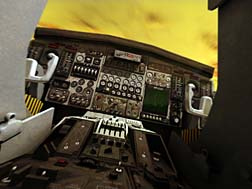It was May 30th when the Airbus A-320 touched down at Toncontin International Airport on its second attempt, skidding past the end of the runway and barreling into a hill, killing the pilot and two passengers. Two people were killed on the ground in their cars crushed by the hulk of the Airbus plane.
 The pilot, with over 11,000 hours of flight logged in the air, aborted his first attempt to land due to poor visibility. On his second attempt, he touched down in the middle of what is already one of the shortest runways in the world—a runway that was also wet, which worsened braking.
The pilot, with over 11,000 hours of flight logged in the air, aborted his first attempt to land due to poor visibility. On his second attempt, he touched down in the middle of what is already one of the shortest runways in the world—a runway that was also wet, which worsened braking.In fact, the aging Toncontin airport was built in 1948 with a runway shorter than some municipal airports. At 5,300 feet, the runway is shorter than that of the Municipal Airport in Goldsboro, North Carolina. The topography of the region, with hills all around, forces pilots to make abnormally steep approaches to the airport.
What's more, given the location of the region at 3,300 feet above sea level, it has been reported that pilots require more runway for takeoffs and landings, than they otherwise might.This, given the already anemic length of the runway, is a disaster waiting to happen. It's a wonder there haven't been more.
Of the 124 passengers, seven were American and two hailed from Canada. The flight originated in Los Angeles with a crew of six and five off-duty employees of the airline flying as passengers.
The scene on the ground was one of chaos. After skidding off a runway that was wet at the time, the plane crashed through a metal fence and plowed across a busy Honduran street adjacent to the airport before it slammed into a hill, breaking the fuselage into several pieces. While three people died on the plane, two were killed on the street—trapped in cars that wound up underneath the stricken plane. Fire crews and airport personnel were frantically hosing down cars trapped beneath the plane as thousands of gallons of jet fuel gushed from the Airbus tanks.
Incredibly, only two died on the ground, one of whom was believed to be a taxi driver. The number of cars crushed by the plane totaled three. On a busy Honduran street, there could have been more.
Beyond the pilot, identified as Salvadoran Cesare D'Antonio, the other two fatalities in the plane were Jeanne Chantal, spouse of the Brazilian ambassador to Honduras, Brian Michael Fraser Neele. Harry Brautigam, a Nicaraguan who headed a regional development bank, died of heart failure.
There were 65 injuries.
As a result of this accident, the 60-year-old airport at the Honduran capital will be limited to smaller aircraft with a passenger compliment of no more than 42. Larger commercial jets will be using the much larger airstrip at Palmerola, which is about 30 miles north of the capital.
Ironically, the Palmerola airport, which is also known as the Soto Cano base, had been mostly used for drug surveillance planes—with a landing strip that is substantially larger than Toncontin. At 8,850 feet long and 165 wide, it is far more able to handle larger aircraft, given the altitude and the topography of Honduras.
It is a travesty that it took an air disaster to facilitate that switch. There have been others. Eleven years ago a US Air force C-130 cargo plane overshot the runway at Toncontin and continued on for 200 yards before bursting into flames on a major boulevard, killing three.
The worst accident was in 1989 when a Honduran commercial jet hit a nearby hill. There were 133 casualties. While three people died on the plane, there were 65 injuries, and all on board were traumatized. It is telling that victim Brautigam died of heart failure, which may have been brought on by the trauma of the event. For those who survived, there could be lingering health issues.
READ MORE AIRPLANE CRASH LEGAL NEWS
Beyond that, questions remain. Why were large, commercial jets allowed to land at Toncontin given the challenges, when a much larger airfield was available just 30 miles away --the same airfield, at Palmerola, where commercial jets are now required to land. That decision is considered permanent. However, it took yet another air disaster to motivate that decision.
Why officials failed to recognize the failings of the Toncontin airport for commercial jets, and opted not to move large aircraft to a larger airport before now, is a question for the gods.
But it's a question that will be answerable in the courts of law, on behalf of the unwitting victims of that decision.
